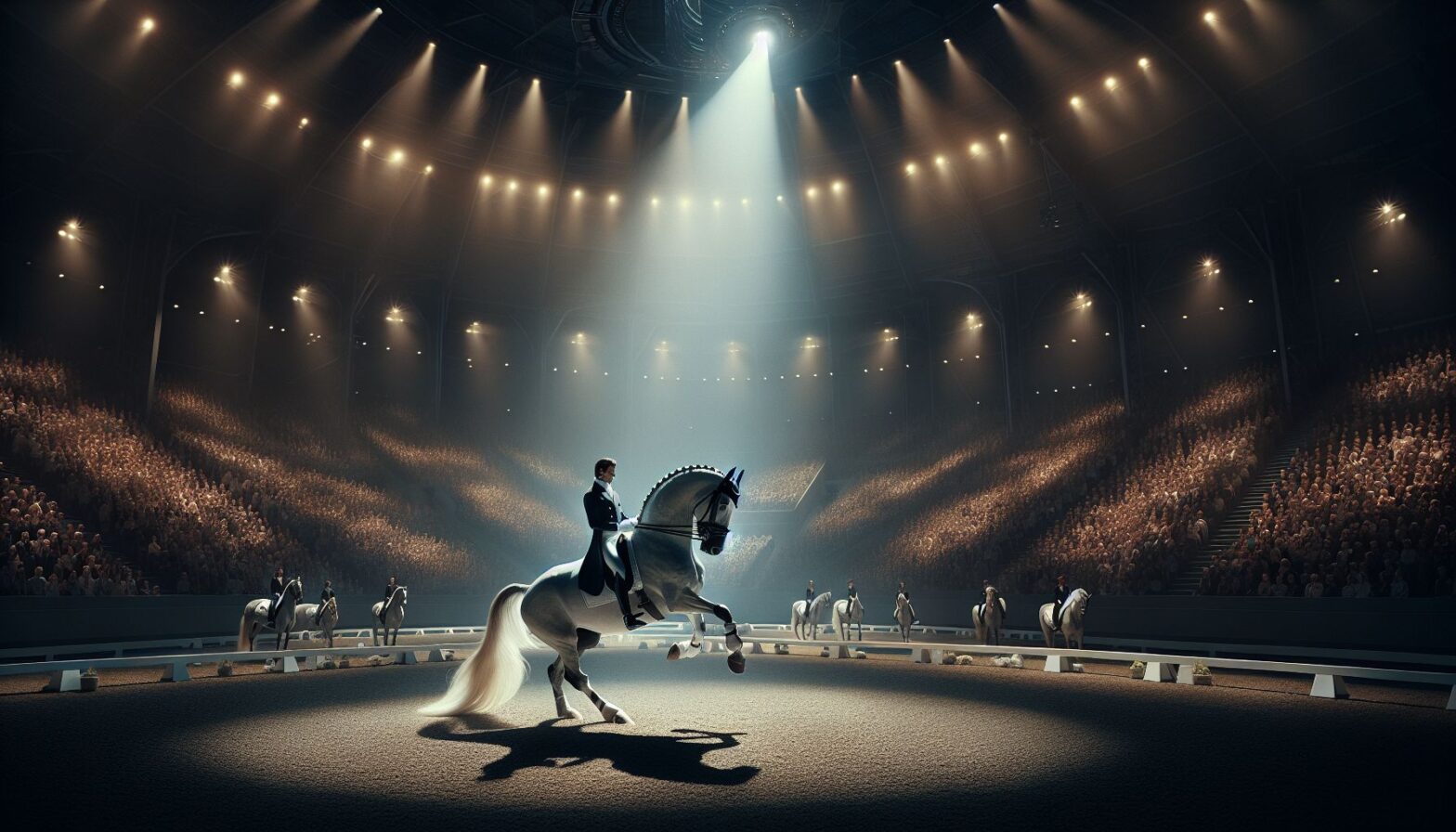If you have ever marvelled at the sight of a horse moving with grace and precision, seemingly gliding through the air with each step, you may have witnessed the art of dressage in action. Dressage, a French term meaning “training,” is a beautiful equestrian discipline that showcases the harmony and partnership between horse and rider.
In dressage, the horse and rider perform a series of intricate movements and patterns, often set to music, that demonstrate the horse’s athleticism, obedience, and suppleness. It is often referred to as “horse ballet” for its elegant and choreographed nature. While dressage may seem intimidating to those unfamiliar with the sport, it is actually accessible to riders of all levels and can be a rewarding and fulfilling experience for both horse and rider.
The basics of dressage
Dressage is often considered the foundation of all equestrian disciplines, as it emphasizes the correct and harmonious development of the horse’s natural movements. The goal of dressage is to develop a horse’s balance, flexibility, coordination, and obedience, ultimately creating a willing and responsive partner for the rider.
In dressage, riders are judged on their ability to communicate with their horse through subtle aids and cues. The rider’s position, balance, and timing are all crucial factors in achieving the desired results. Movements such as circles, diagonals, changes of direction, and transitions between gaits are all common elements of a dressage test.
The levels of dressage
Dressage is divided into levels based on the difficulty of the movements and patterns required. The levels range from introductory levels, suitable for beginners and young horses, to the highest levels of international competition. Each level has its own set of movements and requirements that must be met in order to progress to the next level.
At the lower levels, riders focus on developing the basic skills of dressage, such as maintaining a steady rhythm, straightness, and balance. As riders progress through the levels, they are introduced to more advanced movements, such as collection, extension, lateral work, and flying changes. These movements require the horse to engage its hindquarters, lift its back, and carry itself with lightness and balance.
The importance of partnership
One of the most important aspects of dressage is the partnership between horse and rider. Dressage is a team sport, requiring clear communication and trust between the two partners. A successful dressage test is the result of a harmonious relationship built on mutual respect, understanding, and cooperation.
Building a strong partnership with your horse takes time, patience, and dedication. It requires the rider to develop a deep understanding of the horse’s body language, temperament, and unique strengths and weaknesses. By working together as a team, horse and rider can achieve a level of harmony and unity that is truly magical to witness.
The benefits of dressage
Dressage offers a wide range of benefits for both horse and rider. For the horse, dressage helps to improve fitness, flexibility, and balance, leading to a healthier and more athletic animal. It also helps to build confidence and trust in the horse, as it learns to respond to the rider’s aids with willingness and obedience.
For the rider, dressage is an excellent way to improve riding skills, balance, and coordination. It also helps to develop a deeper connection with the horse, as riders learn to communicate more effectively through their aids and cues. Dressage can be a challenging and rewarding sport, offering endless opportunities for growth and learning.
Getting started in dressage
If you are interested in trying dressage, there are a few key things to keep in mind. First and foremost, find a qualified instructor who specializes in dressage and can help you develop the skills and techniques you need to succeed. It is also important to have access to a suitable horse that is well-trained and capable of performing the movements required at your chosen level.
Start slowly and be patient with yourself and your horse. Dressage is a complex and demanding discipline that takes time to master. Focus on building a strong foundation of basic skills before moving on to more advanced movements. Set realistic goals for yourself and celebrate your progress along the way.
Above all, remember to have fun and enjoy the journey. Dressage is a beautiful and rewarding sport that offers endless opportunities for growth and learning. Embrace the challenges, celebrate the victories, and revel in the magic of the equine ballet.
In conclusion, dressage is a captivating and dynamic equestrian discipline that celebrates the beauty, grace, and athleticism of the horse. It is a sport that requires dedication, patience, and skill, but the rewards are well worth the effort. Whether you are a seasoned competitor or a beginner rider, dressage has something to offer for everyone. So saddle up, grab the reins, and unleash the graceful art of dressage with your equine partner.
